How to Buy Fabric: Types of Fabrics
When I first started sewing, I remember feeling completely overwhelmed! Fabric stores tend to have tons of fabric everywhere – mainly unorganized. In fact, at the beginning I used to look around feel bogged down and just leave empty handed. You all have asked a lot of questions about the different types of fabrics I have been using for my makes and when you should use it, I thought I may as well try and break it down for you here.
When you really get down to it, there is terminology for every kind of fabric available. I will keep it simple here and break it down to the fabrics that you will come across the most as well as how they can be used.
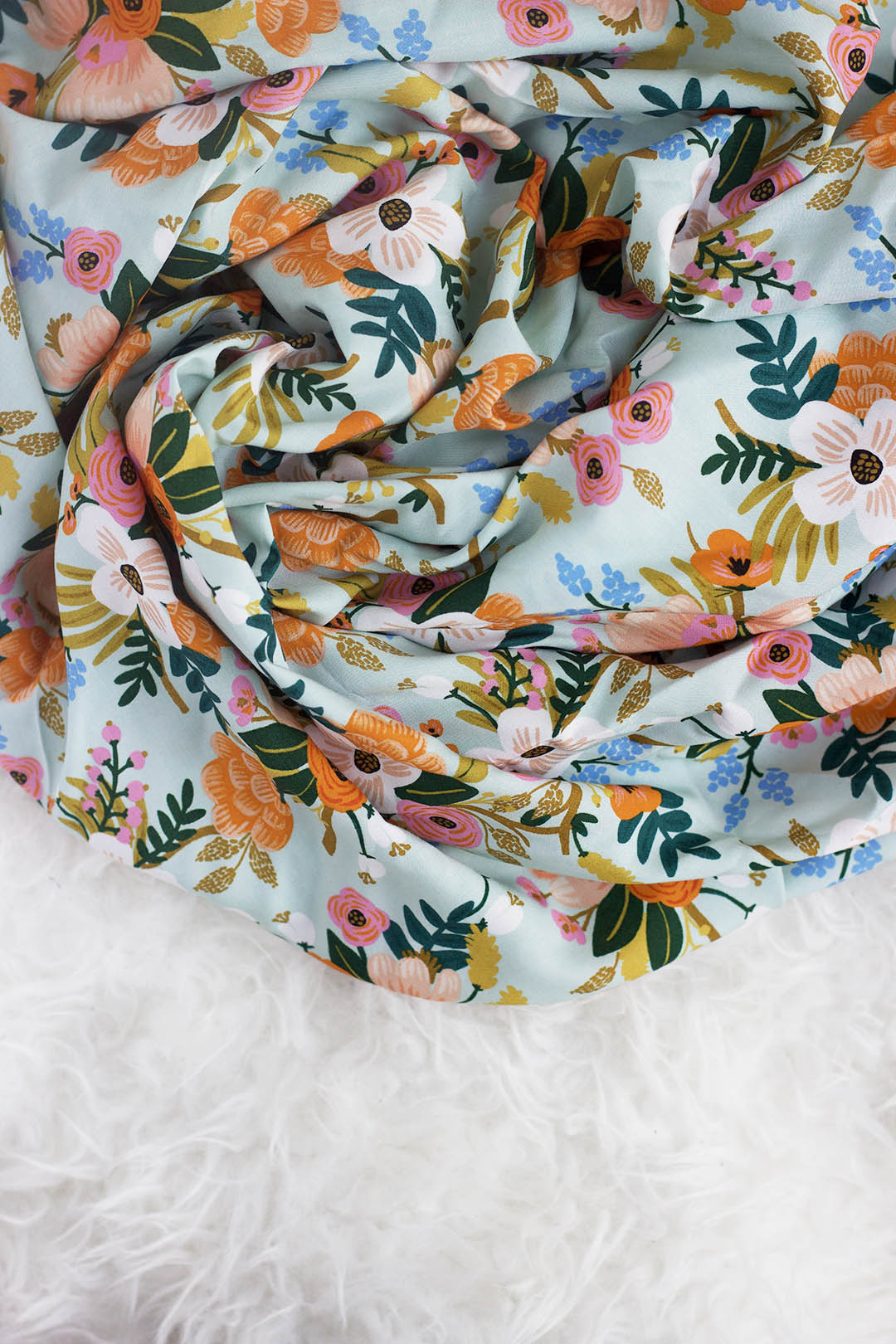
Categories of Fabric
Woven – This means the threads are interlocked in each other. This fabric retains its shape and also does not have a lot stretch. This makes it easier to sew with because the fabric does not move under the machine as you sew. They are ideal for beginner sewers.
Knit – The threads here weave in and out which makes the knit fabrics stretchy and flexible. The benefit is that it stretches and has movement. Of course, this fabric also moves around when you sew which makes it trickier to sew with.
So how do you choose which type of fabric? It comes down to whether you want your garment or product to have stretch or not. I often use cottons that have no stretch for bags and I use knits for things that I want to have some stretch like headbands.
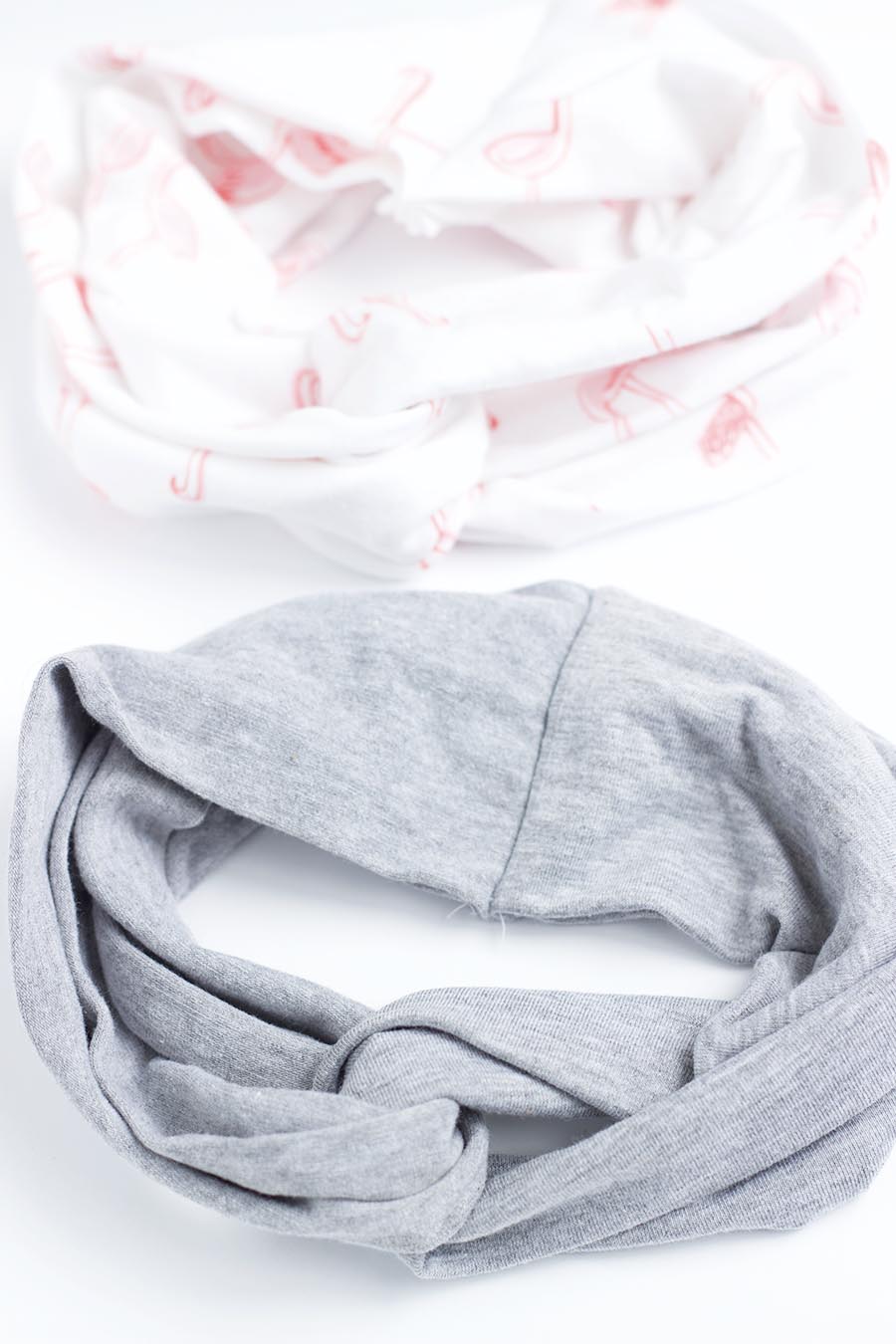
Materials
Fabrics can be classified as 1) Natural 2) Synthetic 3) Semi-Synthetic
Natural Fabrics:
Natural fabrics comes from animals and plants for the most part. Cotton, wool, leather are great examples of natural fibres which are sourced from the cotton plant, sheep and cows respectively. Other natural fibres include silk and cashmere. These tend to be the most expensive fabrics (aside from cotton).
Synthetic Fabrics:
Synthetic fabrics are chemically produced. The fabric is made through a process called polymerization (this reminds me of my chemistry classes). The synthetic fibres can have many different properties that you cannot have with natural fibres (e.g., elastic and waterproof materials). Nylon, spandex and polyester (such as fleece) are examples of synthetic fabrics.
Semi-Synthetic:
Semi-synthetic fabrics is made from natural materials and modified partially by chemical processes. They are then woven or knit into fabric. Rayon, bamboo, lyocell are examples of these fabrics.
So how do you choose between these materials? Well it really depends on what you plan on making, preference on how the fabrics feel and where you stand ethically on how they are processed and manufactured. The benefit of making your own clothes is that you can choose the type of fabric that best fits into your lifestyle and preferences. The more I sew, the more I truly appreciate that it allows me to make my own choices for fabric.
The Types of Fabric and When to Use Them
Light weight fabrics for warmer weather
Cottons: 100% cotton fabric is great to begin sewing with and they can be found at most fabric stores. It is light weight and you can find an abundance of prints. They are perfect for bags, more stiff summer dress, quilting, aprons, cushion covers and many more projects.
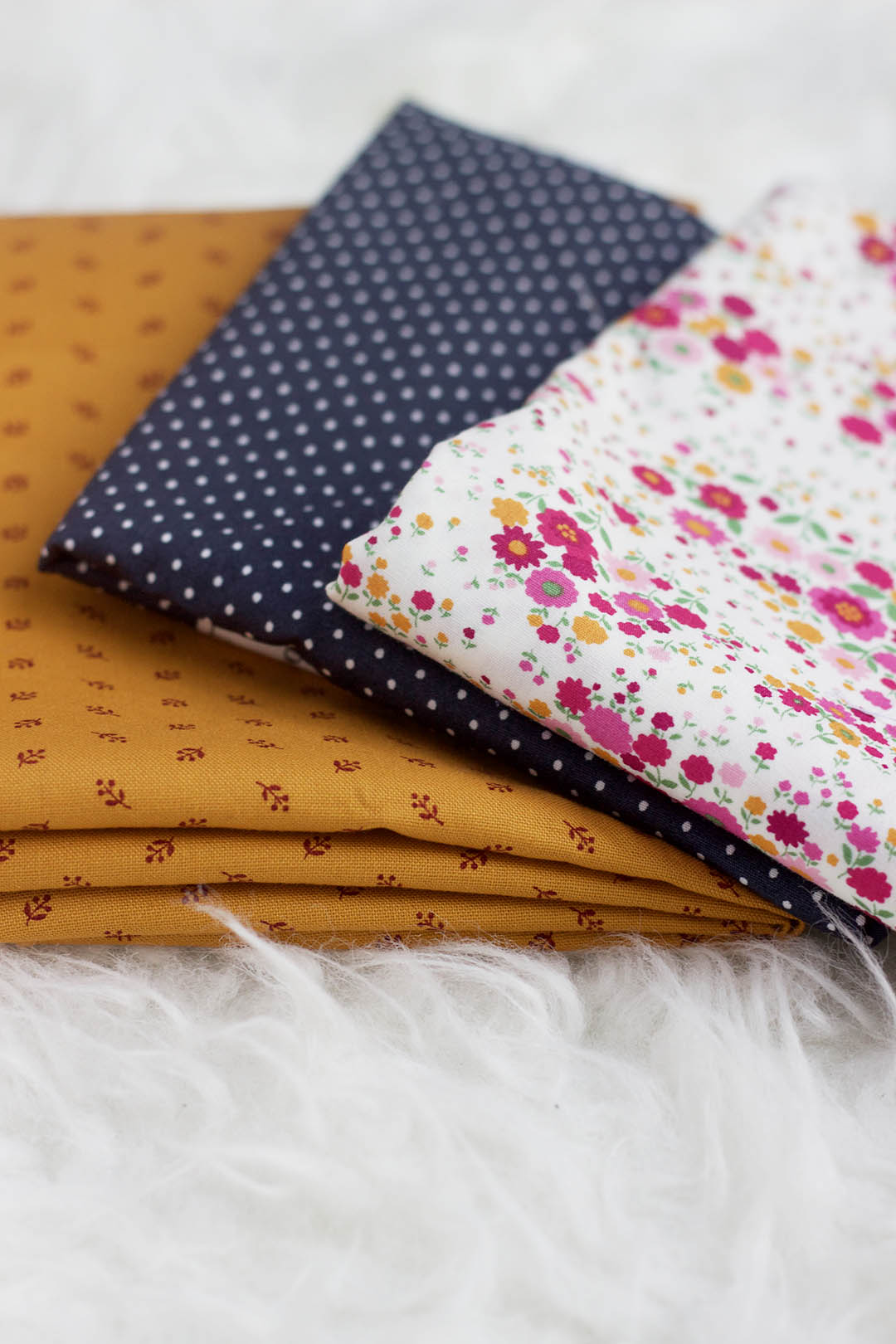
Silk: Breathable and very delicate fabric. It is a bit more slippery to work with but has a beautiful luxurious feeling to it. This also makes it harder to sew with. Great for clothing like dresses and shirts.
Rayon: This is an ultra soft, smooth fabric with tons of movement. They also come in beautiful fun prints. They tend to be a bit more expensive I find, especially if you go towards designer prints. This fabric is great for skirts, loose fitting tops and other garments. It drapes beautifully! 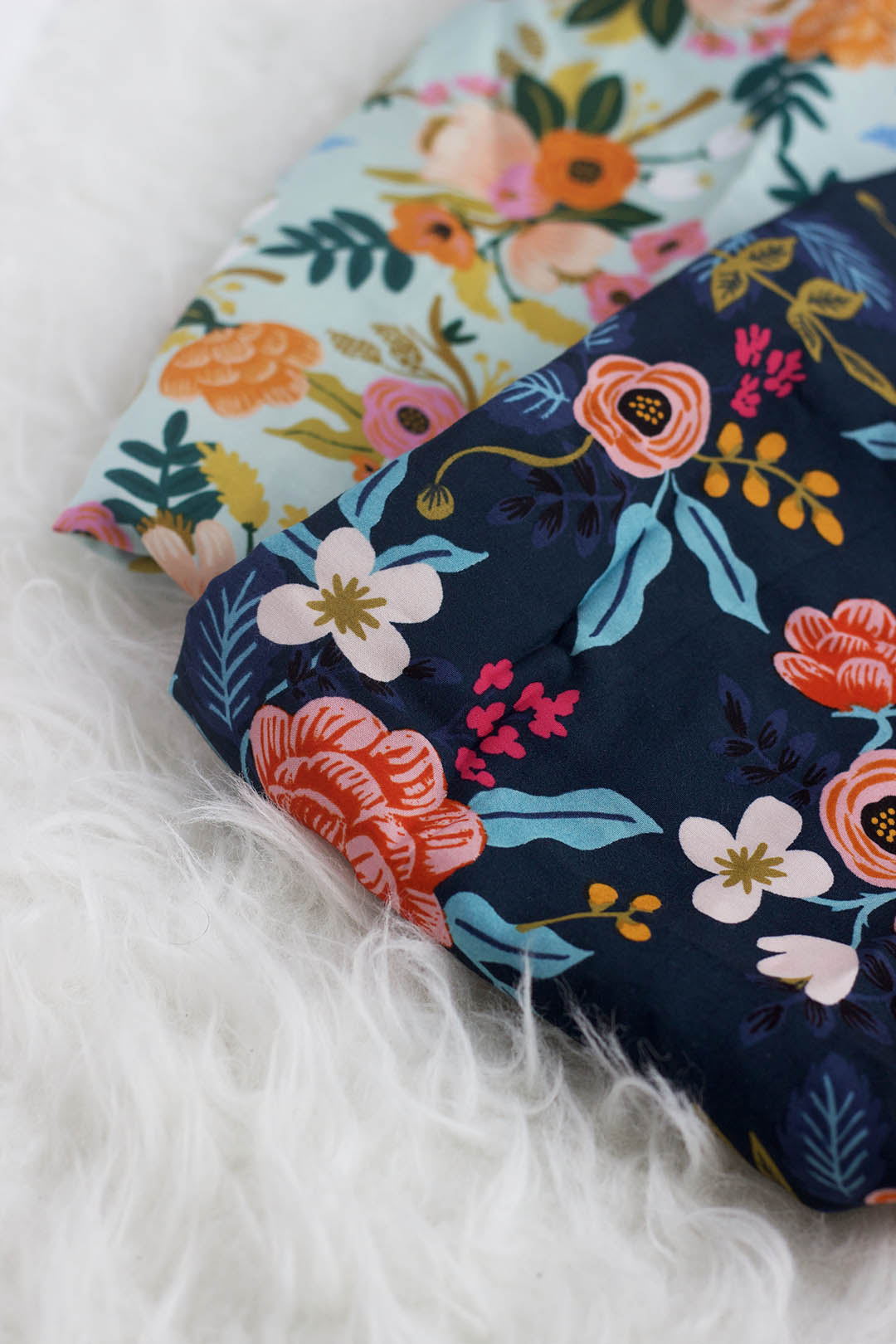
Jersey knits: These are so soft and stretchy. They work beautifully for tshirts, skirts and other apparel that need some stretch to it.
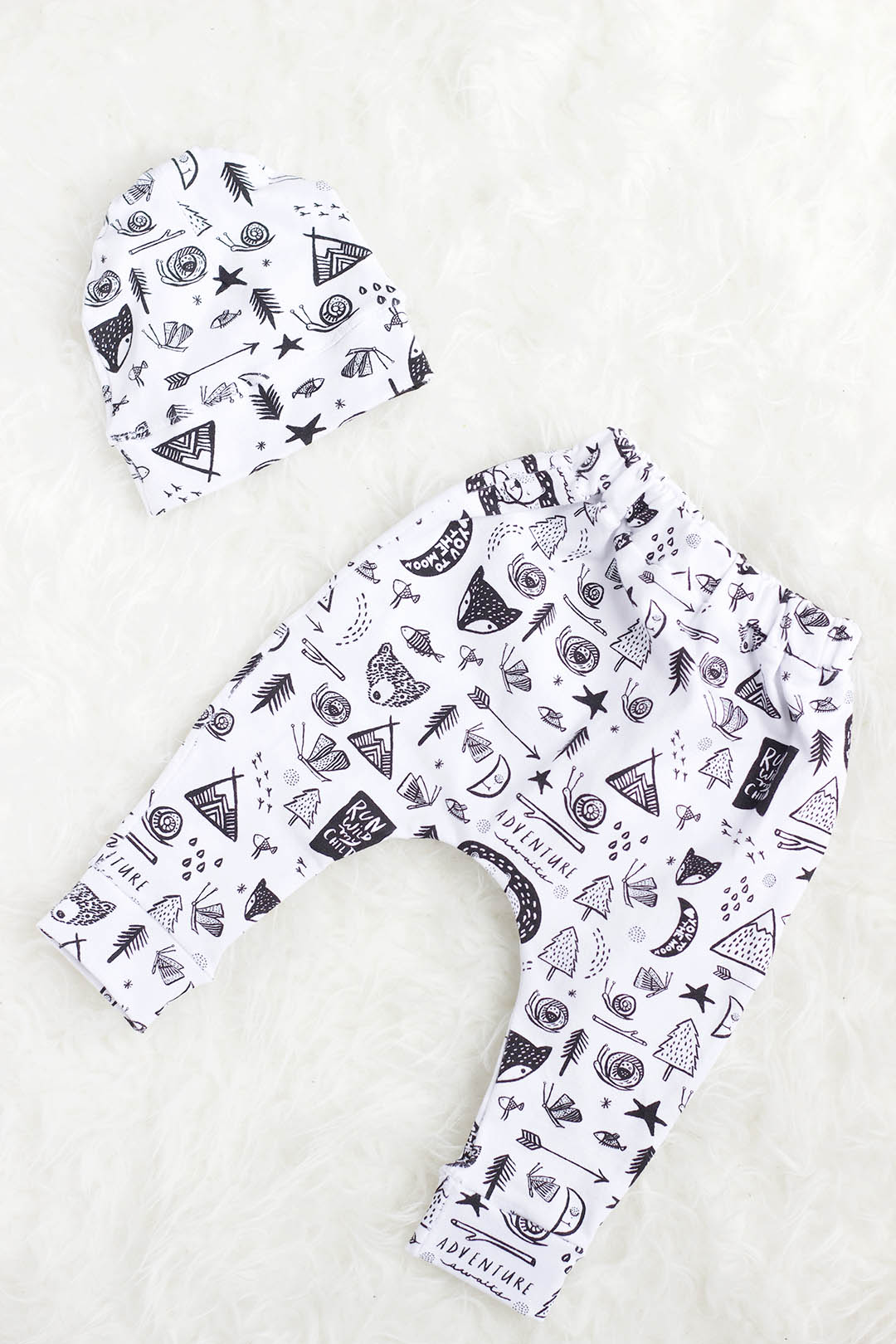
Linen: This is more medium weight fabric which makes it great for summer. I have been loving linen fabrics this summer, but it wrinkles so easily. Again, perfect for dresses, shirts and pants but does not have the same crisp fitted look other woven fabrics will give you.
Heavyweight fabrics for cooler weather
Wool: Heavier fabrics which are perfect for winter weather. Great for coats and suits.
Denim: Heavy weight and does not have a lot of stretch to it. The jeans you buy these days often have some spandex woven in which gives it a bit more stretch.
Flannel: Warm and insulating which makes it great for blankets and pyjamas.
Fleece and Minky: These are plush fabrics which are soft and cozy! Perfect to use for blankets, stuffed animals, baby items and pyjamas. Only downside is they may pill after a few washes so it does not last too long in your closet.
Flannel: Warm and insulating which makes it great for blankets and pyjamas. It’s not as thick as fleece and tends to shrink and pill quite a bit when washed.
Home Decor and Bags
Vinyl: Does not have any stretch, quite thick and has with very little movement. Great for faux leather bags. They come in a ton of different colours and thicknesses. I have used this to make my Fira Fold Over Clutch, eye glass pouch and the Queenstown Makeup Bag.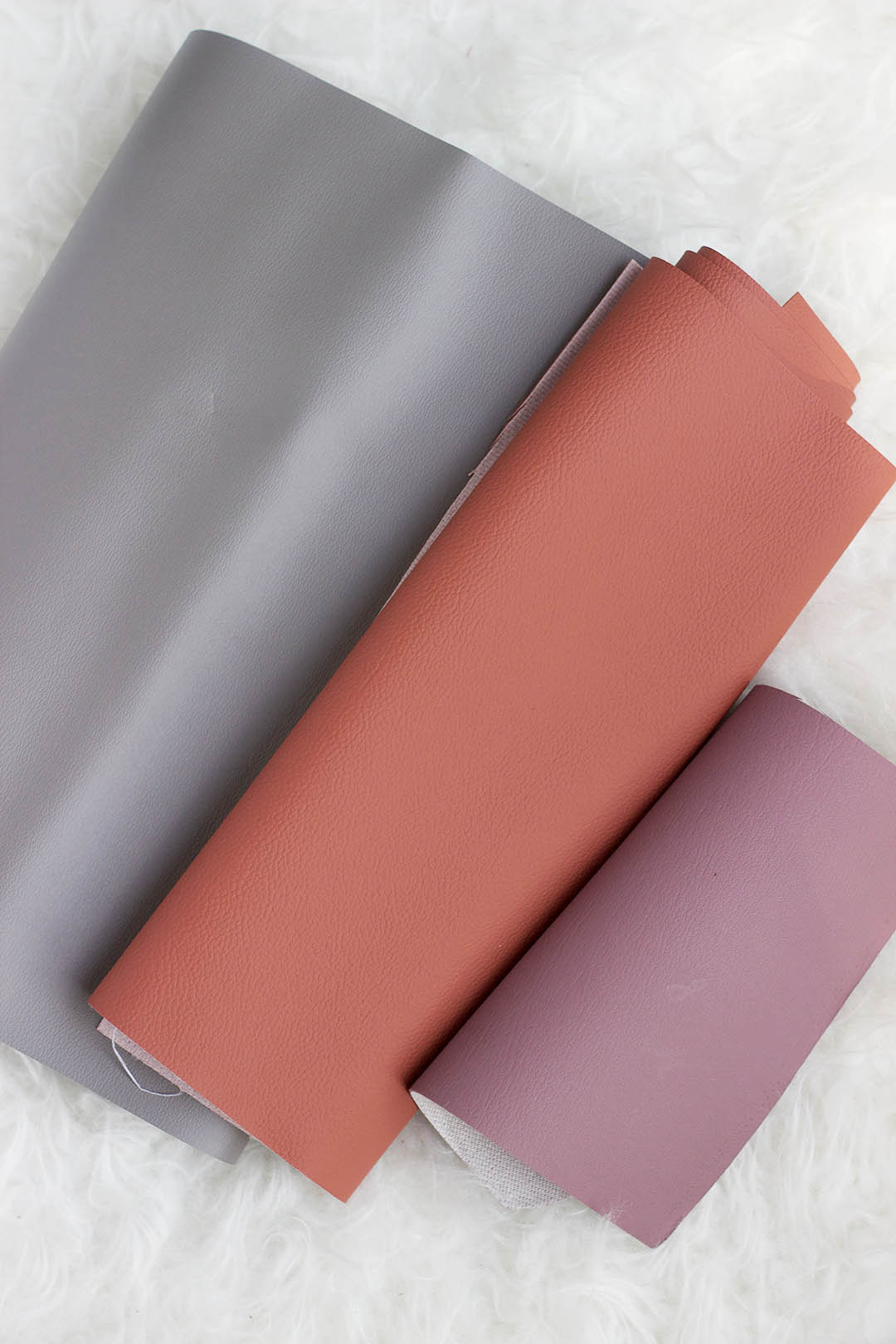
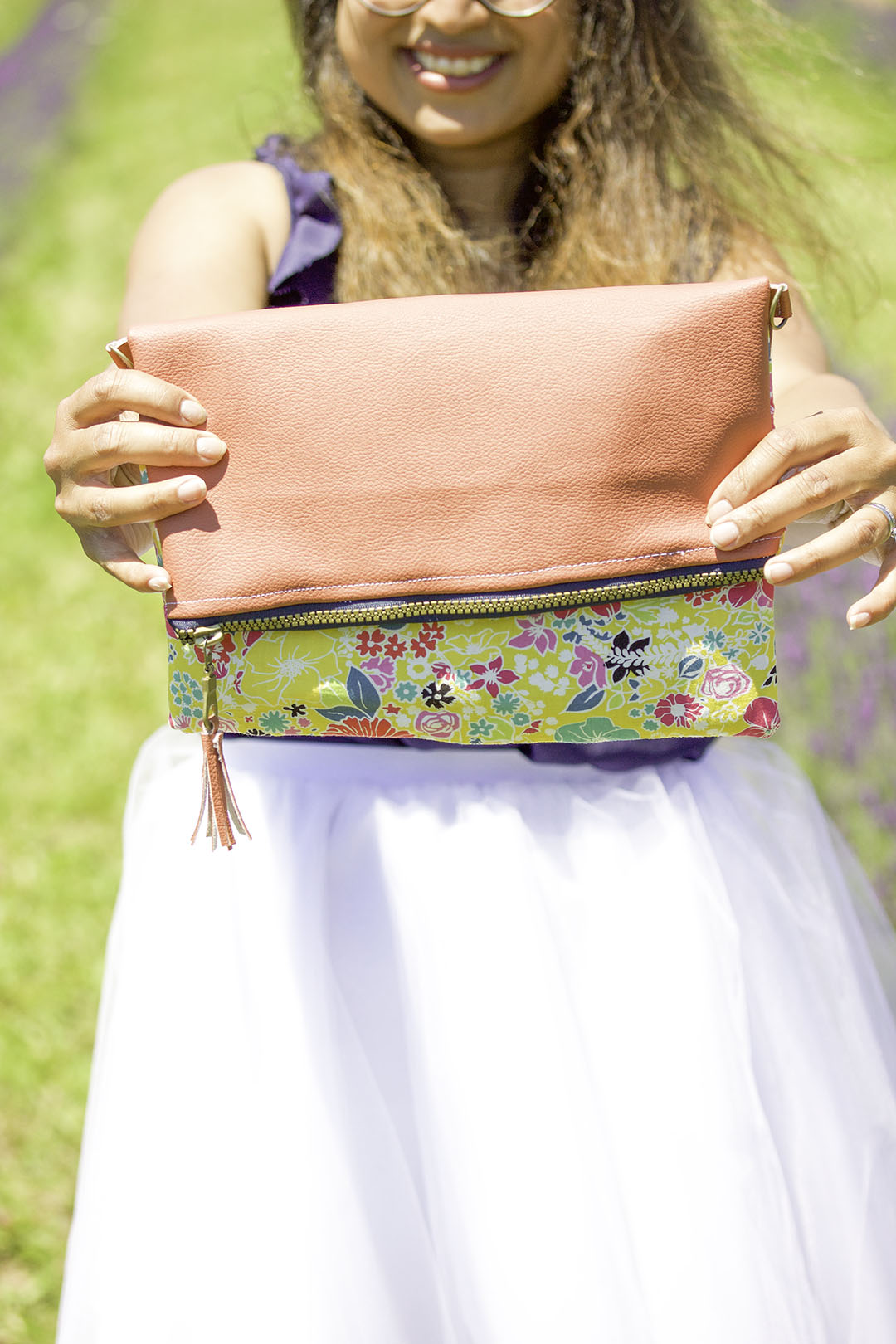
Canvas: Another woven fabric that can come in various stiffnesses. They can be used for outdoor type of products, throw pillows, tote bags, lining for bags. I’ve used this in my Queenstown Makeup Bag as the lining material.
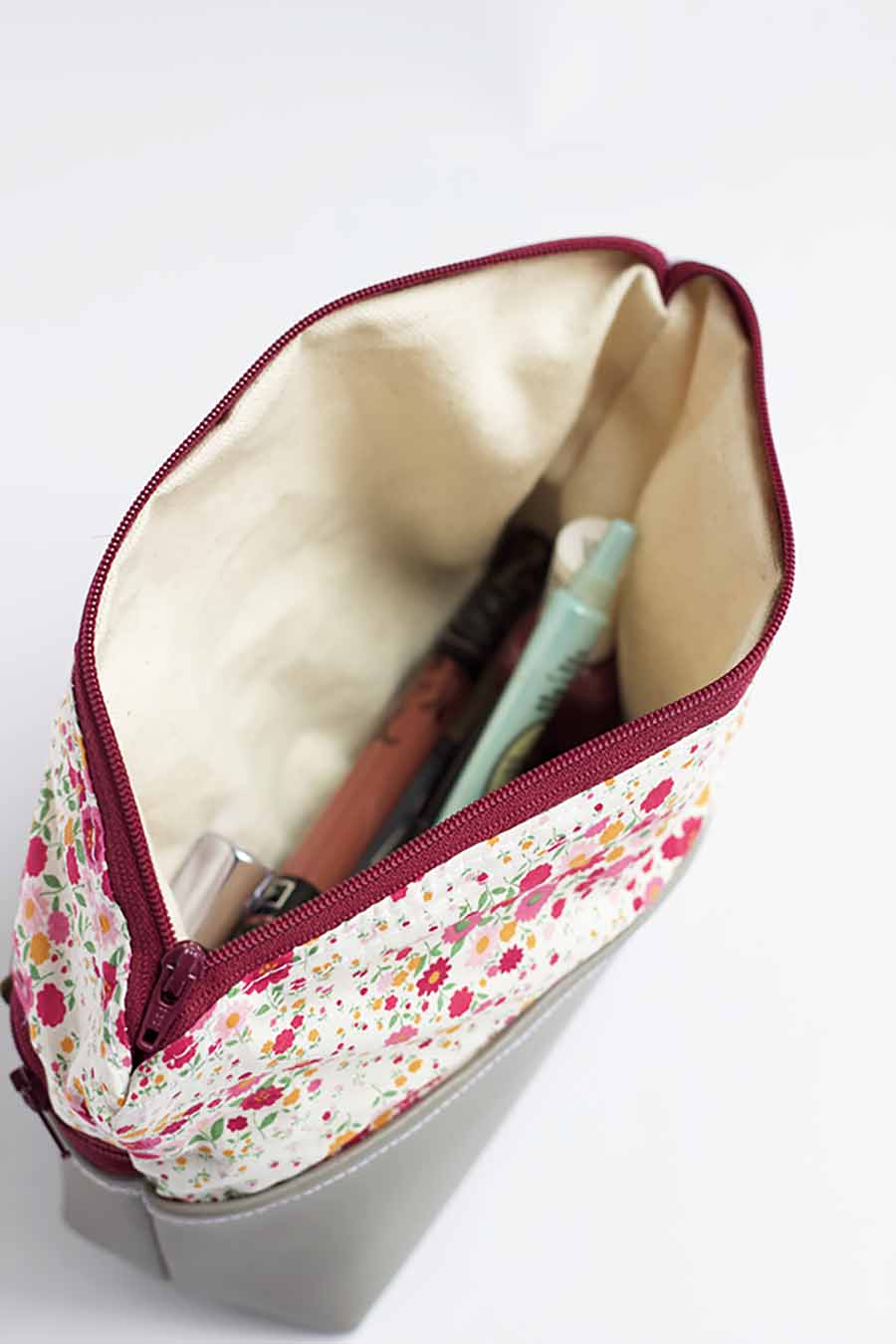
Fabrics for Special Occasions
Tulle/Crinoline: Both of these fabrics are a type of netting and great for more formal wear. Tulle is soft and light weight and can be used for skirts (see circle skirt tutorial). Crinoline which is usually placed underneath garments to give structure.
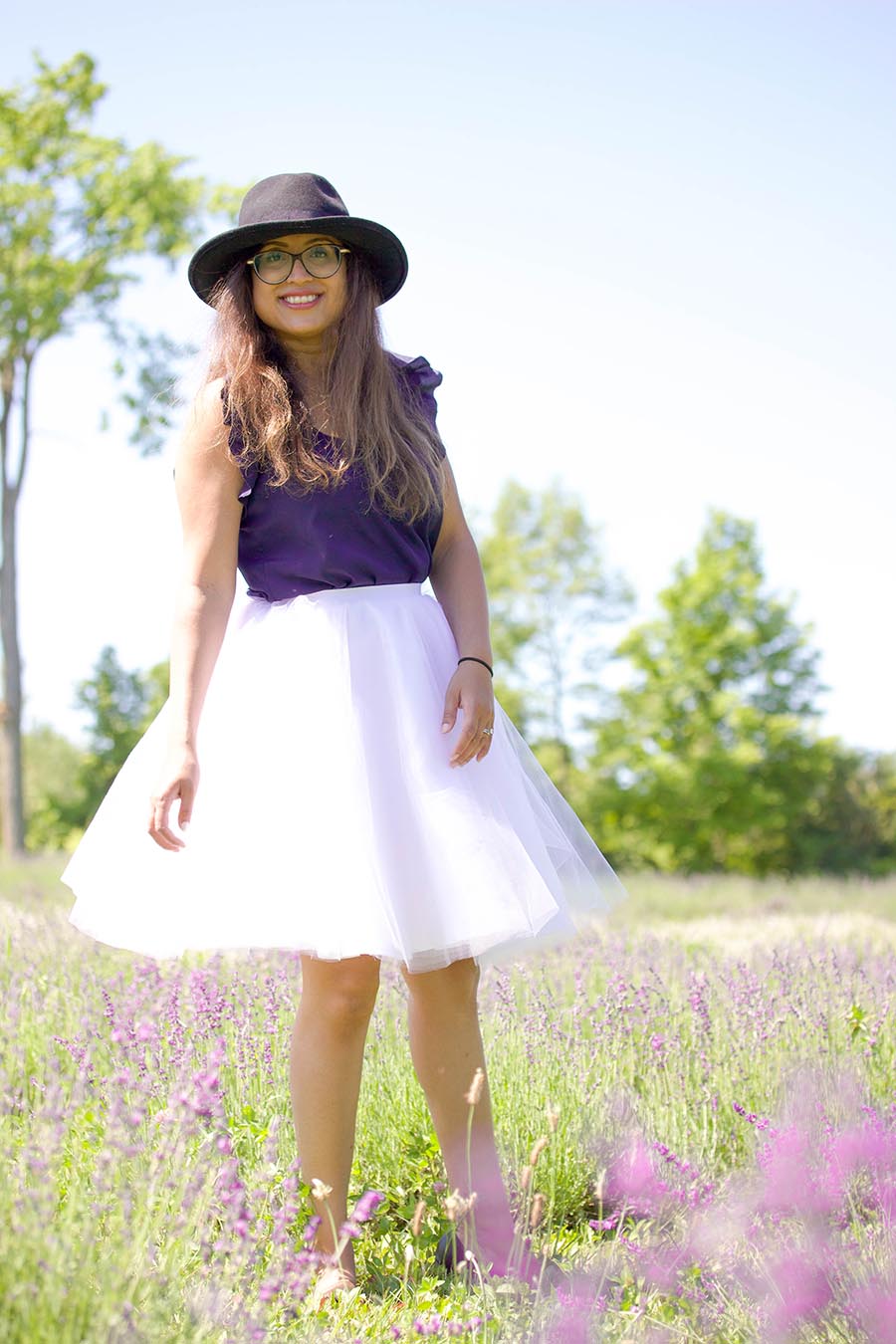
Satin: Super glossy fabric that you will see on formal wear, like wedding dresses. I used satin as a lining in my tulle skirt to create a beautiful drape and shine to the skirt.
Chiffon: Is a super sheer, light weight fabric and flows easily. It can come in both silk and polyester (more affordable).
Lace: Usually cotton or silk thread that has been woven together to make beautiful patterns.
Velvet: Heavy weight and very insulating. Used for dresses and other apparel.
So how do you choose between fabrics? It really depends on what you plan on making, preference on how the fabrics feel and where you stand ethically on how they are processed and manufactured. The benefit of making your own clothes is that you can choose the type of fabric that best fits into your lifestyle and preferences. The more I sew, the more I truly appreciate the ability to make these choices.
How to Buy Fabric
Okay, so now that you know what fabric you need, how do you go into the fabric store and buy fabric with confidence? I think this may be the hardest part.
1.Well fabric comes in bolts which are often 44″ wide but can go up to 60″ wide. Take your fabric to the desk as the cutting counter will cut the amount you need. Of course, the amount of fabric you need will depend on the width of the bolt. I recommend going in knowing how much you need before getting it cut.
2. Fabric is usually measured in yards but most fabric stores measure and price in both yards and meters. Remember 1 yard = 0.91m (so 1 metre is bigger than 1 yard). Patterns often list the amount of fabric needed in yards, so personally I measure in yards. Fabric stores, often only cut in 1/4 or 1/2 yard increments so make sure you know exactly how much fabric you need.
3. Keep in mind the amount that some fabrics like natural fabrics (e.g. flannel), shrink. So, you may have to buy a bit more fabric to account for this shrinkage.
4. Prints on fabrics are beautiful and great for apparel and home decor. Keep in mind that when you are sewing the direction of the print has to be the same. This may also require that you buy more fabric so you can fit all the pieces together in the same direction. You do not want sew a dress with the print falling in random directions.
5. Keep in mind the amount that some fabrics like natural fabrics (e.g. flannel), shrink. So, you may have to buy a bit more fabric to account for this shrinkage.
SAVING MONEY
1. Let’s talk coupons! Yes, many of the large scale fabric stores will have coupons available online so keep an eye out! These coupons can save you a lot of money over time. Also, sign up for the small local store newsletters because they send discount codes for fabric.
2. I absolutely love designer fabrics because of the types of prints that are available. BUT, they are a lot more expensive than generic fabrics. So, until I’m confident in the project I plan on using it for, I tend to keep it in my stash. Start with more affordable fabrics!
3. Choose fabric that will last. Personally, if I am spending the time to sew something I want it to last. Fabrics that are “cheaper” can be great to start out with, but they contribute to fast fashion and often get thrown out pretty quickly. So, make a decision on the type of fabric that suits your needs and preferences.

5 Tips for Fabric Shopping
- I first do my research, making sure I know exactly how much fabric I need.
- Ask for help! Make sure you ask someone where to find the fabric you need. I love wondering around the fabric store sometimes just to get ideas of different fabric choices and patterns but this can be overwhelming when you have a specific project in mind. So, ASK!
- Personally, I just feel the fabric out and ask myself, does it have the right drape, softness and thickness. I find that feeling the material is really important in the decision making process.
- Of course, check the price before hitting the counter.
- Thrifted fabric is also a great way to recycle and up-cycle clothes. Just buy a larger dress or shirt and modify it to your needs!
PLEASE PIN THE IMAGE BELOW FOR YOUR PINTEREST BOARDS


